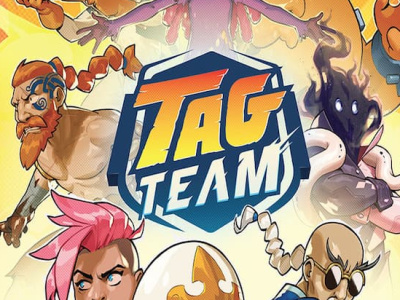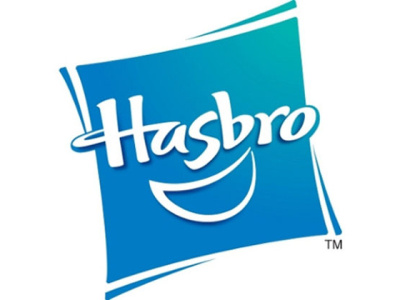Sharpening the Sword is a regular column by retailer John Riley of Grasshopper's Comics, a 1300 square foot comic and game store in
When Ray Kroc first founded McDonald's people just couldn't figure it out. Why would you put the same restaurant all over the town, state or country? Why would people want the same hamburger in
So what does that have to do with us learning from the mass merchants? I think it might be the most important thing we can learn from them. Last time I discussed the message that your window sends regarding the 'language' that is spoken within your store. This is an extension of that concept.
A few weeks ago my wife and I went shopping. We were dying for spring to finally arrive and the stores had just started putting their summer merchandise out so we went out in search of deck chairs. We went to about six very large home goods stores and a weird thing happened in the fourth store we visited. As we were walking around that store, I honestly couldn't tell which store I was in anymore, all the stores had kind of blended into one. My first reaction was a kind of outrage that this store couldn't differentiate itself from its competition. Then I realized that in fact what they had done was meet their customer's expectations.
While I think differentiation is extremely important, what these stores had done was meet their customers' expectations of familiarity. Their customers in the mass market have a certain expectation of what a home goods store looks like. Their customers basically know what product to expect, how it will be laid out, etc... The differentiation lies in the subtleties of how they physically arrange and display their merchandise. For example, Bed Bath & Beyond creates little 'dead end' areas for each product group as they know that customers are more likely to spend time shopping when they are not actually in a 'lane of traffic'.
Now let's look at our music store from the last column. We know that the punk posters in the window communicate to the general public that 'punk' is spoken within the store and that you shouldn't enter unless that's what you want. But what if you enter anyway out of curiosity? You go inside and the racks are all made out of old plywood, which has been painted black sometime long ago. There's stuff under them, but it's just lots of unmarked boxes which may or may not have product in them. There are posters everywhere for bands and even though you're into music you've never heard of any of them. There are lots of photos on the wall which may or may not be for sale. There are lots of racks of...well, stuff. The bins of CDs are in some strange order that isn't readily apparent. A lot seem to be used but you can't tell. There's a back room. You don't know what it's for, but people keep walking into it. Of course, you can't tell if they're employees or customers because nobody has a shirt or nametag on. The register has piles of CDs, magazines and papers on it, which may be for sale or are possibly being sorted. You'd ask for help but you still can't tell who works there and nobody's said hello.
If you're open minded you would probably think, 'Wow, interesting place. It would probably be really cool if I were into this kind of thing.' If you're the general public you'd just shake your head and leave this 'fringe cult hangout' and never come back. Either way you don't buy anything and don't return. The store is great for those it appeals to, but apparently everyone else can go jump in a lake.
Now before you think that I'm cleverly making up this music store to sound like one of our comic shops, I'm not. It's a real place, or at least was when I was younger. I loved going there, but then I was into exploring music. But you never saw anyone's mom in there. Actually, you never saw anyone over their early twenties in there. And I think that's what ultimately killed it. That store didn't communicate to the mass market. The mom looking to buy a gift for her teenage son was lost in that store. She understood Tower Records or Sam Goody's; they were like stores she knew. They were organized around some common retail standard, kind of like bookstores but with CDs (and notice that bookstores now have CDs). The general public wants to shop somewhere they are comfortable. While that music store from my youth was obviously staffed by people totally in love with music, able to talk to you about it for days, and had a selection which included rare incredible things that would never ever appear in a mass market store, it was also undecipherable to the overwhelming majority of humanity.
Now it's time to look at our stores with one very simple question. Would the general public know how to shop within your store? Would the general public recognize your store as a 'store' in their mind? Would they walk in and have some feeling of familiarity that would literally allow them to shop in your store? Or does the experience of being in your store leave them feeling lost?
I've walked into quite a few stores that looked more like someone's attic than a 'store'. I've seen stores that were located in alleys. I saw one store in the back of a tuxedo rental store (no joke). I saw one store that I swore was located in an abandoned building. I've even seen a store located in a barn in the back of a farm. None of these provide the general public with a level of familiarity. Barnes & Noble certainly doesn't look like someone's attic.
This goes beyond 'is your store bright, clean, and well organized'. I think my store is very nice, but that's not enough. By the very nature of our product the general public feels lost. First we have to provide the general public with a shopping experience that they feel a level of familiarity with. If our windows can get them to come inside, our stores have to at least be familiar enough to them to make them feel comfortable walking around. Then we have to build upon that comfort level with displays and information that will both excite them and educate them about our hobby.
I honestly believe that within five years the face of comic retail will change dramatically. Our hard core customers are aging and buying more and more of our expensive product from online discounters like Amazon, while the mass market is more than willing to siphon off sales of our best products. How many copies of Blokus do you think Target will move this holiday season? Target is going to sell huge quantities of our games this season, at the same price that we charge, and with little or no product knowledge. And the only reason why is because the general public simply feels comfortable there.
We can adapt to meet them in this battle, or we can slowly lose a war of attrition.
OK, there's more to learn here. Next time the 80/20 rule and the mass market.







